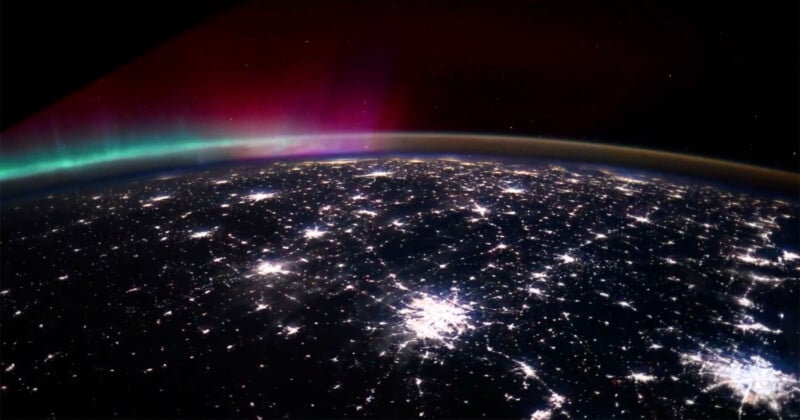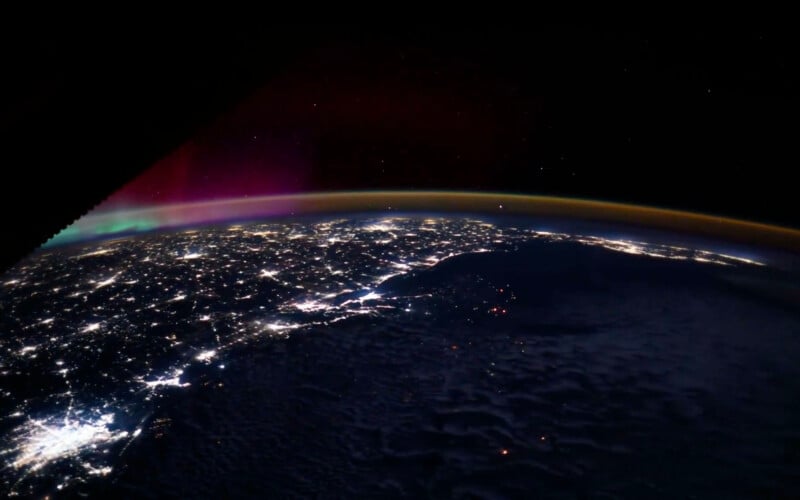Astronaut Captures Spectacular Aurora Lights Dancing Above the United States

“I’ve never seen aurora from below, but up here, it’s a frequent show,” says astronaut Zena Cardman, who currently resides onboard the International Space Station.
Cardman made the comment on an incredible video she took of colorful aurora lights dancing above the Earth’s surface, while traveling at 17,500 miles per hour, 250 miles above terra firma.
The video starts above the United States as the spaceship travels approximately southwest towards Florida before flying over the Gulf and finishing up over South America. At one point, Houston, New Orleans, and the Florida peninsula are all visible in a single frame, along with green and purple northern lights and airglow. Flashes of lightning can be seen above the Caribbean and South America.
I’ve still never seen aurora from below, but up here, it’s a frequent show. Last week’s was especially good. See if you can spot Houston, Florida, and the northern lights all in one frame, before we head out across the Gulf and some great lightning storms over South America at… pic.twitter.com/THqX83wNXL
— Zena Cardman (@zenanaut) November 17, 2025

As the clip gets toward South America, daybreak can be seen coming over the horizon. Astronauts onboard the ISS experience 16 sunsets and sunrises every single day. Digital Trends notes that astronaut Anne McClain recently said that “auroras from space always draw crewmembers to the Cupola.”
Cardman even took time out to shut down an X conspiracy theorist who asked why there were stars in the aurora video, but no stars in another she shared.
“The one on the right was shot during orbital daytime,” explains Cardman. “Just like on Earth, it’s hard for us to see stars in the daylight. Stars are especially visible in nighttime imagery when I use a wide aperture, long exposure, and/or high ISO. You can try the same from the ground!”

Although auroras make for remarkable imagery, the same solar activity that produces them can disrupt satellites and even power grids. Earlier this month, heightened solar activity caused minor interruptions in GPS and radio communications on Earth, though no significant issues were reported — and the event did generate vivid auroras.
Image credits: NASA / Zena Cardman